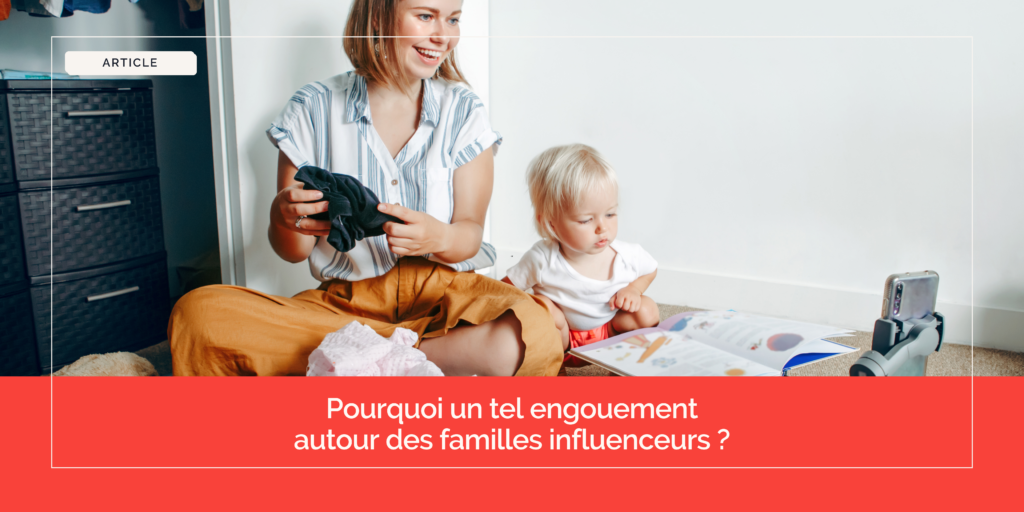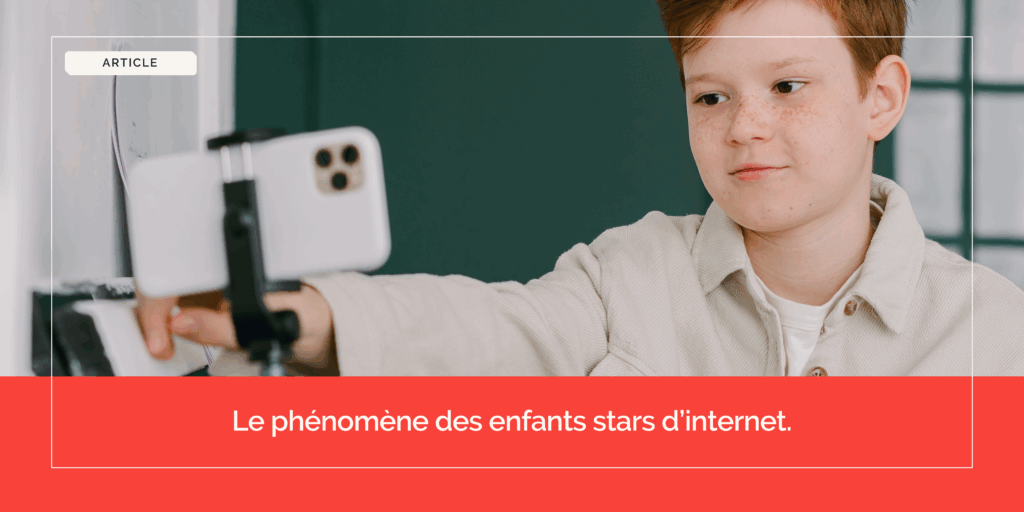As soon as we want to take an interest in the relationship between young people and the advertising world, a few observations immediately come to mind. (Laurence Corroy)
Read the intervention " Paroles de professionnelle " of Shirley Curtat-Cadet, director and founder of the agency Com' des Enfants, in the magazine Jeunes et Médias - Les cahiers francophones de l'éducation aux médias - N°9.
As a communications professional, do you think advertising has become part of our culture (not just our economy)?
Advertising is of course part of the cultural DNA of the so-called Y (current young adults) and Z (their children) generations. Today, the means put in place by brands allow them to make people talk about the product before the consumer even has it in hand. This is a far cry from the spontaneous purchases that a market stall used to provoke. From now on, we inform, we advise, we make people want to buy, we make them react to the launch of a product. We can even question our customers before launching a product, to be sure of the strategy to use. So yes, behaviors have changed, the consumer is bathed in a non-stop flow of information, children are lulled by advertising slogans even before the parent has seen the product itself! How many children today are "capable" of reciting or singing a TV commercial as they would a singing star? For them, even more, it's a question of cultural imprint... it's a game they are happy to play (without necessarily understanding the stakes behind it).
Do you think it is important to help children understand these issues?
No, it is not. This generation is already strongly "soaked" with issues at all levels: education, safety, food... Forcing them to understand the stakes of a brand and the efforts it uses to talk to them would deprive them of their naturalness, their spontaneity and the fact of seeing life with this still innocent look... In my opinion, the intelligence of a brand is to offer the child a new customer experience, a good moment that will allow him/her to remember this brand as something positive, something beneficial for him/her. This is how they will create a link, while respecting their rhythm and desires. On the other hand, parents with a high level of education will perhaps tend to try to "protect" their children from this advertising solicitation.
As an agency specializing in young people, how would you analyze the relationship of children to brand culture (a sensitivity to their signature, to their history)?
Children's relationship with brands differs according to their age, culture, lifestyle, parents, consumption... It is difficult to speak of a "brand culture" for this generation. Indeed, as a zapping consumer, the child will tend to pick up brands according to his desires. The previous generation (us parents) had less solicitations (and the one before even less)... so we remember more easily a Coca-Cola culture for example, commercials with the polar bear... Santa Claus... what the brand was sending as intention. Ask a child today to name "their brand of reference" (or to describe the brand story behind a product in their daily life)... they won't be able to. Too much information kills information, it's a reality... All the channels of expression that flow towards children (TV, digital, print) and their hyper consumption of media, do not allow them to display a real brand preference. This is the challenge of brand communication towards this audience. With children, we talk more about a "favorite license", a character they want to identify with, whether or not they are attached to a brand. There are transgenerational brands (often American, by the way, and very often attached to textiles as soon as you pass the age of six) that benefit from strong recognition by young people: Nike, Adidas, McDonald's, Nutella... 50 years ago, children wore uniforms... so it was difficult to "prefer" a textile brand! And it is also because technology and multimedia equipment have arrived in our homes, in our culture, that Apple and Samsung are among the favorite brands of 7-14 year olds... The most outstanding successes of the last few years are probably in the world of games. Pokémon has been an unfailing success for twenty years... a rather astonishing longevity in the world of children that is worth mentioning. It's a brand that has made its mark in the playground and has created a special bond with young people. The concept has hardly changed in the last twenty years; surprisingly, the same players are still playing it. Some figures on this success: Pokémon has sold 277 million games since 1996/21.5 billion game cards in circulation/$40.4 billion in revenue generated by the Pokémon license since 1996 (Source: BFM Business).
Could you tell us more about this issue of brand communication towards children that you mentioned?
Today, the rules of the game are changing (brand-consumer relationship). If TV is the media of choice on the prescription of the child because historically the mass media, all classes included, this will change. No more TV commercials in public service youth programs as of January 2018, consumer associations calling for the removal of mascots from food products deemed unhealthy... Brands need to innovate and get ahead of what is coming. The overexposure of children to marketing offers will lead the government to strengthen its measures to regulate advertising to avoid any abuse. It is therefore essential for brands today to review their way of communicating, to reinvent a story, to create a new link... For children and teenagers, it is not only the form that counts. They are looking for meaning (and this is what makes them a very rich generation), they want to be considered by the brand and become "consumers" and "consumers". This is an involved generation, which feels concerned by the issues of our society. Brands must therefore mature to accept this role reversal and see their customers as ambassadors, creators of innovative ideas, and not just as product consumers.
During your professional meetings, have you noticed a desire to play on a form of advertising nostalgia? Do clients want to exploit their heritage to address young people?
There is a "return to basics" that has been evident for a few years. Firstly, because brands want to rely on parents to communicate with children (and therefore use the "standards" or brands that parents know), and secondly, because consumers themselves are showing this need to go back to basics. Family values are part of this back-to-basics approach. In the post-war years, advertisers highlighted the family as a true source of stability and happiness when customers had experienced the restrictions and anguish of war. Therefore, a product that "magnified" the family moment was appreciated... It is the same today! Parents work a lot and many barometers show that they feel they don't spend enough time with their children. As for the children, they express a weariness towards their parents' dilettante listening (because they are too preoccupied with their active life). However, children and parents agree that their best moments in life are with their family (Source: Ipsos Barometer January 2017 for the Ferrero group). Advertising nostalgia is in fact a societal nostalgia! The French need to rediscover real values: family, work/family balance, personal fulfillment of each family member (as an independent individual), nature and the environment (a real issue that our generation cares about).
On your website, you mention a generational approach that you explain by the integration of families (parents and grandparents) in your strategies. Do you think there is a family transmission of brands (from parents to children or vice versa)?
Of course, since the Grail for a brand is to succeed in remaining in the hearts of its customers, from generation to generation. A "love brand" will have a better chance of doing this because, like any satisfied customer, they will want to pass on and recommend the products or brands they love to their loved ones, to their children in the future. The emotional power of a brand plays an important role in this transmission effect. This is why more and more brands are trying to tell a strong story, to develop brand content in order to touch the heart of families and thus arouse an emotional reaction to weave an affective link. Very often, the brand has to draw on its values, its story, its positioning and free itself from its offer (products, promotions) to go into a more "corporate" communication territory.
What about the children? What about teenagers? To what extent can they be actors of an intergenerational transmission of brand?
The prescription power of the child is well established. Numerous studies show that a child, on consumer products, is able to make his parent buy a product. This is where the prescription process begins. Talking about intergenerational transmission implies that we are not simply recommending a purchase, but that we are able to transmit a "taste" for the brand. In reverse (from the child to the parent), it is much more difficult to affirm this because, as previously mentioned, the child is not "faithful" or exclusive to a referent brand. He will like change, will follow fashions, friends... His judgment is still influenced by the strength of the group, since this is how he builds himself as an individual. On the other hand, in adolescence, his capacity of individual judgment and his knowledge of brands are more developed. As a native of new technologies, they can pass on to their parents the "taste" of their favorite high-tech brands such as Apple or Samsung... I am convinced that many teenagers have passed on to their parents their affection for the iPhone! They will be able to pass on what they have really mastered and what they have (fun purchases). Clothing brands are to be added to this upward transmission. And on this target in particular, the brand values, its history, its commitment can touch the teenager who will be able to express a brand preference.
Do you think that children inherit a kind of advertising capital?
In the same way that the transmission effect works, children inevitably become heirs. The difference with this new generation is that they know how to make their own judgments about the brand, about its marketing, especially from the age of eight. At six years old, children are able to recognize a brand - the youngest easily spot the associated mascots; at seven years old, they start to assert their power of prescription and at eight years old they are able to understand brand content and therefore create a certain attachment to the brand. Immersed in digital technology and the multiplication of offers, this new generation of young consumers is used to rubbing shoulders with the French advertising landscape, in different forms. Generation Z is a zapping generation... They are multimedia, multi-network and multi-support. They are able to watch TV, computer, tablet and smartphone at the same time!
Would you like to add anything on these issues of culture and advertising heritage in relation to young audiences?
Beyond the parent-child bond, we must also take into account the power of transmission of grandparents. Indeed, their role is intensifying today with the new family models (single-parent families, blended families), as more than 40% of them look after their grandchildren every week. In the eyes of children and adolescents, grandparents enjoy a certain respect and a special attention. Relieved of their educational or restrictive roles, they uphold strong family values, have a great deal of life experience and display a complicit and transparent relationship with their grandchildren. As a result, their power of inter-generational transmission is strong; they will exchange brand memories with their grandchildren and will act as prescribers for certain purchases (games, toys...). It is therefore in the best interest of brands to consider this new target because it is at the heart of a transgenerational power. Some brands have made this their communication spearhead, such as Cafés Grand'Mère, which has managed to play with the generational divide and deploy a collaborative marketing strategy using the blogosphere, social networks, etc. They have even developed a translator to connect the generations. This proves above all that knowing the generations, what unites them and what opposes them, is essential to carry out a sustainable strategy for brands.
Link to the pdf : "Culture and advertising transmission" / Jeunes et Médias - Les cahiers francophones de l'éducation aux médias - n°9
Buy the full review: https: //www.publibook.com/jeunes-et-medias-les-cahiers-francophones-de-l-education-aux-medias-n-9.html/
















